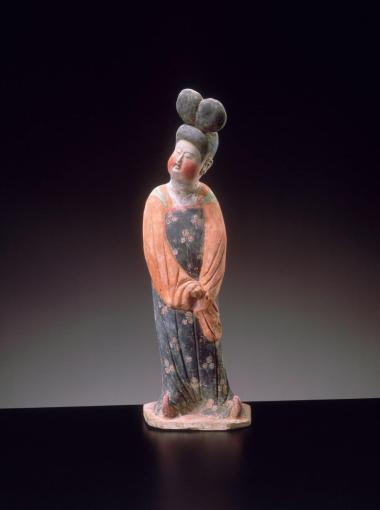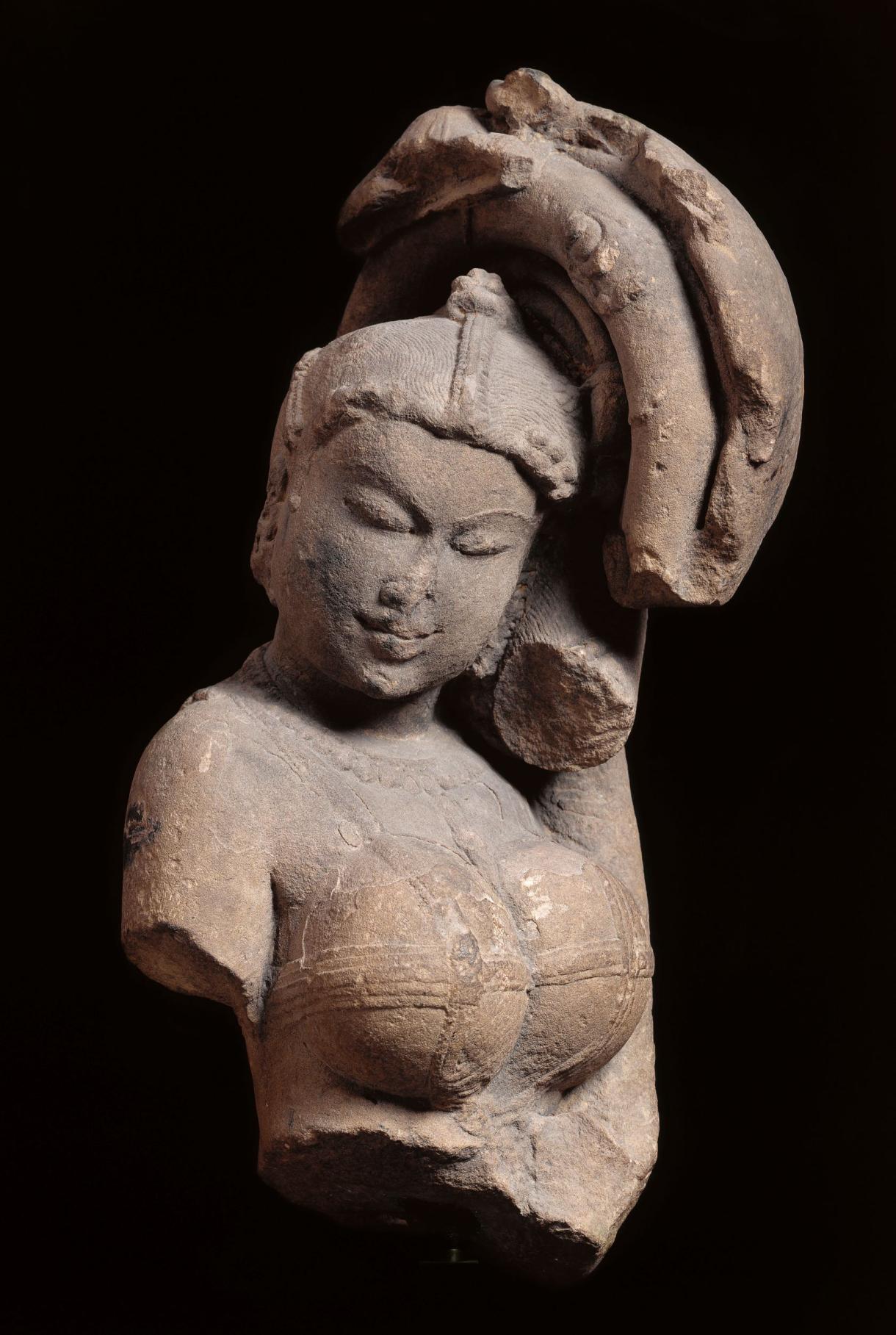À l’époque médiévale, la femme demeure un thème de prédilection pour les sculpteurs, qu’ils soient bouddhiques ou brahmaniques. Elle apparaît, comme ici, sous un aspect traditionnel qu’elle conserve à travers les siècles : sensuelle. Cette femme à l’arbre appuyée à un fragment de rinceau, et dont seul le buste subsiste, présente une poitrine généreuse. Sa tête légèrement penchée vers la droite ainsi que la torsion du buste restituent peut-être la position d’origine en tribangha ou "triple flexion" caractéristique de la sculpture indienne. Les nombreux ornements qui la parent (boucles d’oreilles, long collier perlé) illustrent le goût passionné des femmes indiennes, depuis les temps les plus reculés jusqu’à nos jours, pour les éléments de parure.
Le traitement naturaliste du corps, la rondeur des formes, la pureté et la grâce font de cette sculpture une œuvre pleine de charme qui était destinée à orner les parois des sanctuaires couvertes d’une multitude de déesses secondaires appelées devatâ, qui charment les dieux par leur présence, et de « femmes à l’arbre » ou shâlabhanjikâ, symbolisant la fécondité.
La production de l’art du Nord de l’Inde à l’époque médiévale (9ème-14ème siècle) est riche et variée. L’art brahmanique s’y développe avec une force et une richesse extraordinaires dans les grandes provinces du Nord – comme par exemple au Râjasthân, ainsi qu’au Madhya Pradesh occidental, sur le site de Khajurâho – où se créent des styles d’architecture et de sculpture particuliers. Dans la plupart de ces régions, les architectures souvent grandioses sont toujours très décorées.

